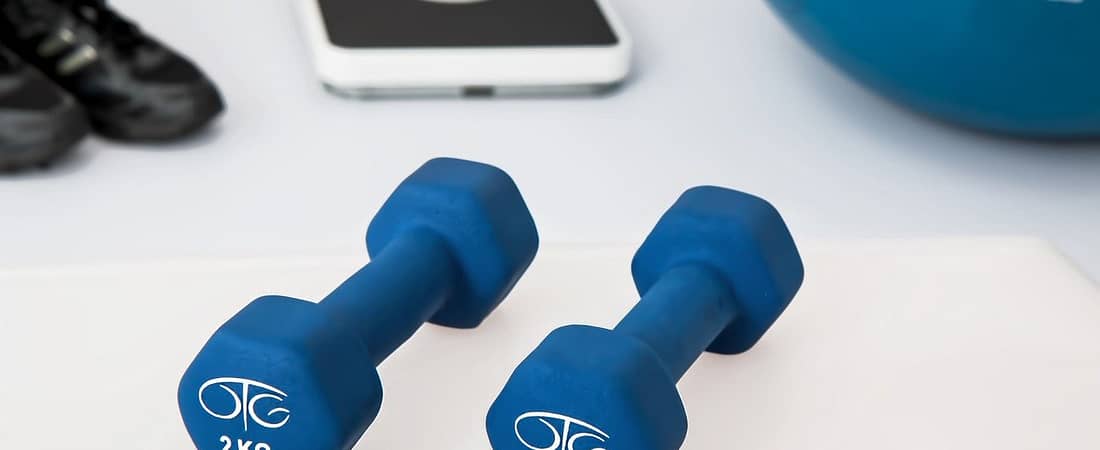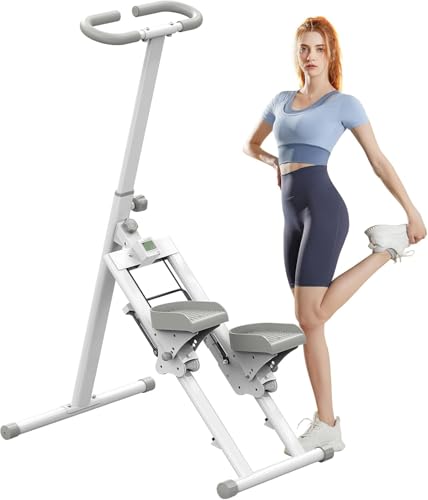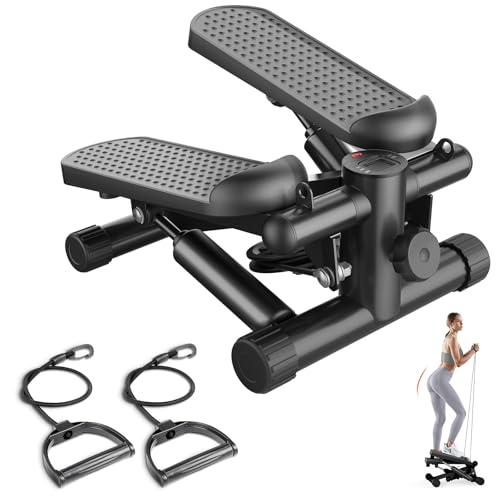Staying active shouldn’t break the bank. For busy moms and families, simple budget-friendly exercise gadgets can keep everyone moving – without gym fees or fancy machines. Think jump ropes, resistance bands, yoga mats and more. These affordable tools let you burn calories, build strength and boost fitness right at home. In fact, a jump rope provides a full-body workout and really gets your heart pumping, and it costs under $10! You can pack it in your purse or take it to the park.
Walking up and down your stairs, squeezing in a quick band workout, or following a free online fitness video can all add up to big health gains. By using them regularly (even just a few minutes a day), you’ll see that you really can exercise within your budget.

Jump Rope – Quick, Full-Body Cardio
Jump ropes are a childhood favorite and an athlete’s warmup secret because they deliver fast cardio and engage nearly every muscle. Skipping raises the heart rate and works legs, core and arms. GoodRx notes jumping rope is an “effective total-body movement”. It’s incredibly versatile – do it in intervals (30 seconds on, 30 off) or continuously for a few minutes between chores. Always jump on a cushioned surface (like a yoga mat or grass) to protect knees, and start with easy single jumps before trying tricks like double-unders.
Try these jump rope moves:
- Basic Bounce: Feet together, swing and jump at a steady pace.
- Alternate Foot: Jump from one foot to the other like jogging in place.
- Single-Leg Hop: Lift one foot behind you and hop on the other (switch legs).
- High-Intensity: Once comfy, swing the rope faster for a quick cardio burst.
Jump roping is also fun for the family – see who can do the most jumps in 30 seconds! For busy parents, it’s perfect “exercise anywhere” gear.
- Durable & Adjustable Rope / / This jump rope is made of steel wires that are coated with strong PVC material, making it …
- Jump Fast, Jump Easily / / Built-in with high-quality ball bearings, the skipping rope provides you with comfortable jum…
- Ergonomic Foam Handles / / The ergonomic handles are well designed for your safety and convenience: they are covered wit…
Resistance Bands – Versatile Strength Training
Resistance bands replace heavy weights with elastic tension. They let you work every muscle from arms to legs. Cleveland Clinic explains that bands can strengthen muscles as effectively as free weights. You can easily adjust difficulty by using thicker bands or stretching further. Bands are extremely portable: toss a set in your gym bag or suitcase.
Make sure to pick bands with good tension (avoid the flimsy freebies). Some Amazon sets (e.g. Fit Simplify or AmazonBasics) include handles and a door attachment. Resistance bands let you do a wide range of exercises:
Resistance band exercises:
- Squat: Stand on a loop band and hold ends at shoulder height; squat and stand against tension.
- Biceps Curl: Stand on the band and curl your hands toward shoulders.
- Chest Press: Anchor band behind you (around a pole or door) and press arms forward as in a push-up motion.
- Side Walk: Place a loop around your ankles and take side steps to work hips/glutes.
These moves work muscles you use every day (carrying groceries, lifting kids), making daily life easier and burning extra calories.
- High End Exercise Bands. Our 12″³ By 2″³ Heavy Duty Loop Resistance Bands Come In 5 Varying Resistance Levels. This Make…
- Great With Any Workout. This Resistance Band Set Can Be Integrated Seamlessly With Various Popular Workout Program. Or U…
- Multiple Uses. While These Resistance Bands Are Often Used For Sports And Fitness, Physical Therapists Love These Physic…
Pedometer/Step Tracker – Keep Moving Every Day
A simple pedometer can turn “lazy” days into active ones. People who track their daily steps with a pedometer end up walking far more – about 3,000 extra steps per day on average. That boost (roughly 30 extra minutes of walking weekly) led to big health benefits: those pedometer-wearers were 66% less likely to suffer a heart attack or stroke later on. The only gadget needed? A basic step counter (many are about $10–$15 on Amazon) clipped on your belt or shoe.
Using a step tracker encourages small changes – like parking farther away or taking a quick hallway stroll. You can even make it a game: challenge your spouse or kids to a step contest!
Step-up Tips:
- Set a goal: Start with a modest daily step goal (e.g. 7,000–10,000).
- Walk breaks: March in place during TV commercials or walk around while on phone calls.
- Track progress: Check your steps midday and after dinner to hit targets.
Step counters are simple, but the effect is huge. Just seeing your step count climb can motivate you to take the stairs instead of the elevator, or a lap around the block.
- SIMPLE & EASY TO USE: 3D Pedometer for Steps Only. No Bluetooth, no app or smartphone connections required. Only one res…
- ACCURATE COUNTING: Pedometer has advanced 3D Tri-Axis Sensor technology, so it is much more accurate than most pedometer…
- EASY TO READ: With large LCD multi-function display, you can clearly and easily read the numbers at a glance. Makes it t…
Hand Weights (Dumbbells) – Build Strength at Home
Dumbbells are classic fitness tools that cost very little. Even a pair of 5–8 lb dumbbells can significantly tone arms, shoulders and legs. Strength training with weights (or even bands) builds and maintains muscle and strength. Harvard notes that strong muscles also help build strong bones, lowering fracture risk. That’s a big deal as we age.
Neoprene-coated dumbbells (colorful, easy-grip weights) are wallet-friendly. If space is tight, pick a single adjustable dumbbell set. Until you buy, even items like full water bottles or canned goods can substitute as light weights.
Simple dumbbell exercises:
- Biceps Curl: Stand tall and curl the weights toward your shoulders.
- Overhead Press: From shoulder height, press dumbbells overhead to work shoulders.
- Goblet Squat: Hold one dumbbell at your chest while squatting.
- Weighted Lunge: Hold weights by your sides as you step into lunges.
Do a few reps while watching TV or waiting for dinner to finish cooking. Gradually increase weight or reps to keep challenging yourself. These moves strengthen muscles you need for everyday tasks (like lifting kids or groceries) and help boost metabolism even after the workout ends.
- 3 pound dumbbell (set of 2) for exercise and strength training
- Neoprene texture in Purple offers long lasting durability
- Hexagon shaped ends prevent dumbbells from rolling away and offer stay-in-place storage
Yoga Mat (Exercise Mat) – Comfort for Floor Workouts
A good yoga or exercise mat is an affordable luxury for at-home workouts. It gives you a cushioned surface for stretches, sit-ups, planks or yoga poses. According to fitness experts, yoga mats provide cushioning that protects your joints during floor exercises. They also have a textured, non-slip surface to improve stability and prevent sliding during movement.
Mat-based workouts:
- Child’s Pose Stretch: On your knees, sit back on your heels and reach arms forward for a gentle back and hip stretch.
- Plank: With forearms or palms on the mat, hold a straight-arm plank to engage core muscles.
- Floor Crunches: Lie on your back on the mat and do crunches or leg lifts without hurting your spine.
- Push-ups or Yoga: A mat makes push-ups and downward dog much more comfortable on knees and hands.
Treat the mat like your personal mini-gym. Roll it out for 10 minutes of stretching in the morning or evening – it’s a small step that can reduce aches and help keep you flexible.
- 100% NBR foam
- Imported
- Extra thick, cushy floor mat in Blue for yoga, gym, and everyday exercise
Medicine Ball – Core Power and Explosive Strength
A medicine ball is a weighted ball you can grab, throw, or hold during exercises. It’s fantastic for adding resistance to core and full-body moves. For example, medicine ball training “utilises a huge range of movement,” strengthening hamstrings, glutes and abdominals effectively. Try throwing or slamming the ball to work your heart and muscles at once.
Medicine ball moves to try:
- Russian Twist: Sit with knees bent and feet on the floor, hold the ball with both hands and twist your torso side to side to work abs.
- Wall Slam: Lift the ball overhead and slam it down on soft grass or carpet (or gently against a wall) for a full-body blast.
- Squat Press: Hold the ball at chest height, squat down, then push up and press the ball overhead.
- Overhead Throw: From a standing position, throw the ball forward (against a wall or to a partner) to engage shoulders and core.
Because many med-ball exercises are fast and dynamic, they get your blood pumping like cardio. Plus, kids often enjoy catching or tossing a medicine ball, turning strength moves into a playful game.
- 10-pound weighted medicine ball for upper, lower, and full body exercises
- Constructed with sturdy, firm rubber with weight labeled on both sides of ball; lightly textured surface provides a supe…
- Can bounce off hard surfaces
Stability (Exercise) Ball – Balance and Core Trainer
A large stability ball (also called a Swiss or exercise ball) is a soft inflatable ball that looks like a toy, but it’s great fitness equipment. Simply sitting or balancing on it works your core muscles. Using a stability ball can strengthen the core (abdominal and lower back muscles) and improve balance. Even stretching on one can make a difference – you have to engage your abs and back to stay upright.
Stability balls are very affordable (often $20–$25 for a 65cm ball with pump) and come in different sizes. They can be used for all sorts of exercises: lie your back on the ball to do crunches; put your feet on it for a hamstring bridge; or use it as a wobble chair to improve posture while you work.
Balance-ball exercises:
- Seated Core Sit: Sit tall on the ball, lift one foot off the ground at a time, challenging your balance (and core).
- Ball Plank: Put elbows on the ball and hold a plank to force your core to stabilize.
- Bridge: Lie on your back with feet on the ball; lift your hips up, squeezing glutes and core.
- Stretch: Lie back over the ball to open up the chest and stretch spine.
Stability balls improve balance and core strength when used properly. They’re lightweight and easy to deflate/store, so they won’t clutter your home gym.
- Anti-burst – made with thick and durable materials. We put your safety as a top priority during manufacturing. Rated up …
- Slip resistant – commercial grade material provides an excellent slip resistant experience while caring for your safety
- Easy to clean – our fitness ball is easy to clean with just a soft damp cloth. Most important, Our fitness ball is phtha…
Proper Shoes – Protect Your Feet and Joints
It might not seem like an exercise gadget, but a good pair of walking or running shoes is one of the best fitness investments. Harvard Health explains that the right athletic shoes absorb impact and can protect your knees and prevent pain. For example, cushioned walking shoes reduce stress on the ankles and shins when you take thousands of steps. Without proper support, you risk issues like plantar fasciitis (heel pain) and knee strain.
Remember: shoes wear out. If the tread is worn or they feel flimsy, it’s time to replace them (about every 300–500 miles of use). Well-fitting shoes make every step count and help you stay active pain-free.
Shoe tips:
- Arch & Cushion: Pick shoes with enough arch support and padding for your foot type.
- Replace Regularly: Swap out old shoes at least once a year, or sooner if they lose support.
- Comfort Check: There should be a thumb’s width of space in the toe box, and the shoes should bend at the ball of your foot, not at the heel.
Treat your shoes as a key part of your workout gear. Even a long walk around the neighborhood can count as exercise — with the right shoes, that walk will be gentle on your body and done more often.
Workout Videos & Online Classes – Free or Cheap Guidance
Your TV, tablet or phone can be a fitness gadget too! There are tons of free or low-cost exercise videos online. YouTube channels like FitnessBlender or Yoga With Adriene offer thousands of workouts for all levels. Many public libraries let you borrow fitness DVDs as well.
Try following a 10–15 minute video during nap time or in the evening. There are family-friendly routines too: Cosmic Kids Yoga (on YouTube) is a fun yoga adventure for young children. Using online videos costs nothing but your energy, and they show correct form so you can exercise safely at home.
Video workout ideas:
- Quick HIIT: Search YouTube for “10 minute HIIT” or “7 minute workout” for fast calorie burns.
- Family Fun: Look for dance or kids’ exercise videos (like GoNoodle) to get everyone moving.
- Yoga & Stretch: Gentle morning yoga videos can wake up your body and mind without any equipment.
Stair Steps (or Mini Stepper) – Home Cardio that’s Free (or Low-Cost)
One of the cheapest cardio workouts is built right into many homes: the staircase! Climbing stairs burns about twice the calories of walking and strengthens your heart, lungs and leg muscles. Next time you have a pause (waiting for dinner to finish, during laundry cycles), sprint up and down your stairs a few times. It’s a genuine workout. Stair climbing is even considered a bona fide exercise by Harvard doctors.
If you don’t have stairs, a small stepper machine is another option. Mini steppers are compact devices with foot pedals. Steppers let you mimic stair climbing at home or even while watching TV. Try 5–10 minutes on the stepper; your legs will feel it the next day!
Step ideas:
- Home Stairs: Do 5–10 stair-climbing bursts (walk or light jog up, walk down) twice a day.
- Interval Sprints: Time yourself sprinting up and down and try to beat your time.
- Mini Stepper: Keep it in front of the couch and pedal during commercials for a low-impact workout.
Conclusion
You don’t need a costly gym membership or fancy machine to stay fit – just a few smart tools and the will to move. These budget-friendly exercise gadgets prove that simple is effective: jump ropes, bands, and even steps count toward a stronger, healthier you. Try picking one or two of these tips to start: for example, do a 5-minute jump rope session during playtime, or strap on a pedometer for a family walk. Gradually, small changes will add up to big results.
Stay positive and celebrate the small wins – a short workout here, an extra flight of stairs there. Keeping exercise thrifty and fun means it becomes part of daily life, not a chore. Affordable fitness is totally doable. Your wallet (and your heart!) will thank you.

This post may contain affiliate links, which means we might earn a small commission (at no extra cost to you) if you decide to make a purchase through one of these links. Thanks for your support!











![Walk On: Walk the Weight Off 30 Day Plan [3 DVD Box Set] Walking ...](https://m.media-amazon.com/images/I/415Aun6PlJL.jpg)

